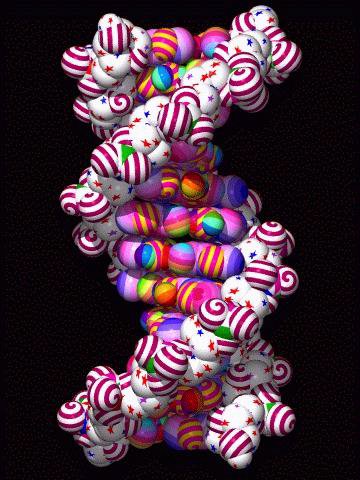|
Cloning is the creation of an organism that is an exact genetic copy of another. This means that
every single bit of DNA is the same between the two!
You might not believe it, but there are some type of human clones among
us right now. They weren't made in a lab, though. They're identical twins, created naturally.
There are 3 different types of cloning; Recombinant DNA Technology or DNA Cloning,
Reproductive Cloning, Therapeutic Cloning. The one most commonly known is reproductive cloning. You might be more
familiar with reproductive cloning with the experiment done in Scotland and the resault was the little cloned sheep Dolly.
Recombinant DNA Technology or DNA Cloning
DNA cloning is the process by which consistsa on taking a fragment of DNA and transfer it to an organism (only
one self-replicating organism) inorder to reporduce the genetic element. Plasmids is one self-replicating organism. Plasmids
are extra-chromosomal circular DNA molecules, they can be used to make many copies of a particular gene. These genetic
elements can then be inserted into a cell of interest and the function of the gene of interest studied.
Reproductive Cloning
Reproductive cloning is a technology used to generate an animal that has the same nuclear DNA as
another animal. Dolly is one example of reproductive cloning technology. In a process called "somatic cell nuclear transfer",
scientists transfer genetic material from the nucleus of a donor adult cell to an egg whose nucleus was removed from its origial
genetic components. The reconstructed egg containing the DNA from the donor cell must is treated with chemicals or electric
current in order to stimulate cell division (if cell division does not take place, the cloning process fails). Once the cloned
embryo reaches a suitable stage, it is transferred to the uterus of a female host where it continues to develop until birth.
Therapeutic Cloning
Therapeutic cloning (also called embryo cloning), is the production of human embryos for use in research.
The goal of this process is to harvest stem cells which can be used to study human development and to treat disease.
Stem cells are important to biomedical researchers because they can be used to generate virtually any type of specialized
cell in the human body. Stem cells are taken from the egg after it has divided for 5 days. The egg by the end of this
stage of development is called a blastocyst. The extraction process destroys the embryo, which raises a variety of ethical
concerns. Many researchers hope that one day stem cells can be used to serve as replacement cells to treat heart disease,
Alzheimer's, cancer, and other diseases, but until then we will have to find alternative ways to deal with these disorders.
 |

